Managing sellers is a big part of running a multivendor marketplace. You will lose your vendors if you don’t give them the right service and the resources they need.
A marketplace seller is equally important as a customer. The quality of a seller will decide how customers view your marketplace. If your vendors/sellers don’t provide quality products, then the reputation of your marketplace will be at stake.
That is why a platform like Etsy has become a popular multivendor marketplace. It successfully manages a marketplace with 8.3 million sellers.
Want to know their secret? Let’s dive in.
The History of Etsy: How It Came About
Etsy is valued at about $7.42 billion (source: Stock Analysis). The marketplace has a global presence, with its business in 83 countries worldwide. But it didn’t happen in one day. It was a long journey with lots of ups and downs.
Let’s look at the timeline of Etsy’s journey to success-
First Launch: The Idea That Gave Rise to Etsy
Etsy was launched on June 18, 2005. Before Etsy was founded, the creators were freelance website developers. While working on a website project for crafters, they learned about the challenges faced by sellers of handmade products and handicrafts on eBay.
Despite eBay’s popularity, its horizontal business model and high commission fees made it less suitable for these sellers.
Recognizing a niche opportunity, the founders envisioned a vertical market focused exclusively on handmade crafts and similar items. This specialized platform would address the specific needs of these sellers, offering tailored features and better support.
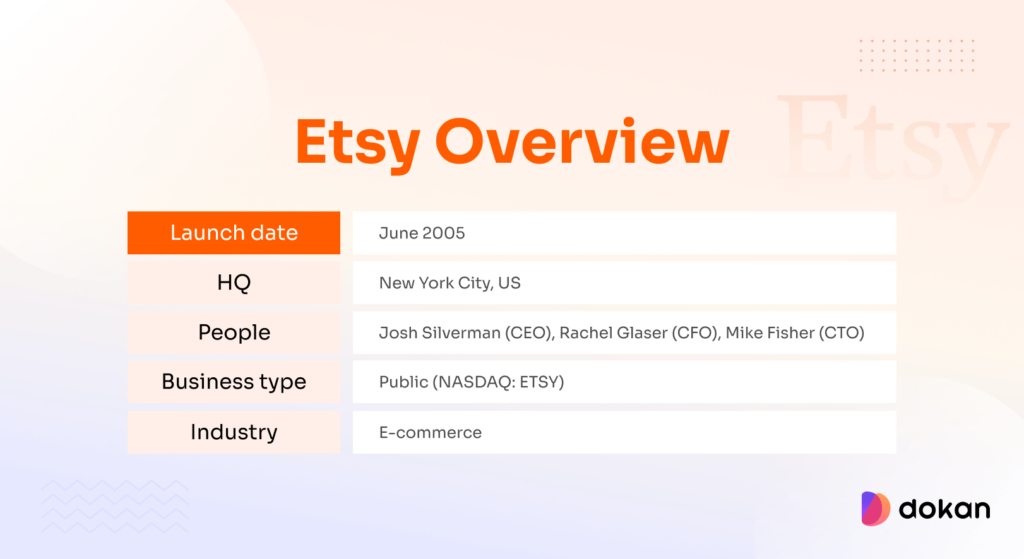
Etsy initially launched its marketplace without requiring payments to capitalize on this opportunity. This strategy helped attract sellers frustrated by eBay’s high fees and allowed the founders to validate their business model quickly.
By launching early, Etsy gained a competitive edge in the market. The team then employed creative marketing strategies to promote the site, which resonated well with its target audience.
Onboarding Sellers Successfully
The founders of Etsy used a strategic and well-targeted approach to onboard sellers to their platform successfully.
They formed partnerships with online forums like Craftster and Get Crafty. These platforms had audiences that matched Etsy’s target vendor profile.
This collaboration was mutually beneficial: Etsy could reach its ideal sellers, and the forums could offer additional value to their members through Etsy’s unique marketplace.
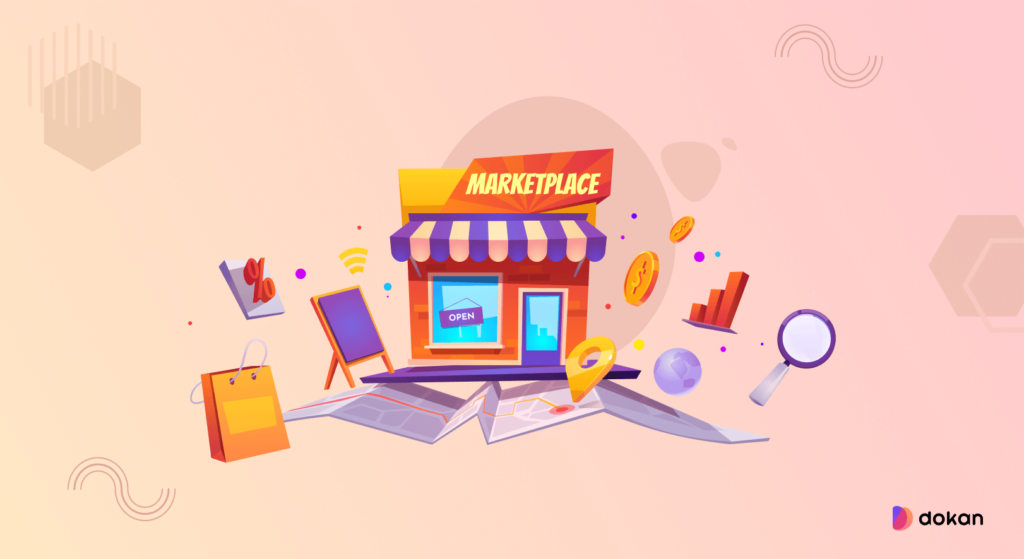
These partnerships yielded positive results, as many sellers recognized that Etsy addressed their major pain points and subsequently signed up.
Additionally, the Etsy founders personally contacted sellers by attending trade fairs where they presented their business proposition.
They invited influential market figures to dinner meetings to discuss and promote Etsy’s benefits.
Moreover, Etsy engaged with bloggers who specialized in handmade artefacts. These bloggers helped spread the word about Etsy, amplifying its reach within the crafting community.
Overall, Etsy’s marketing strategy was highly effective because it was tailored to its target sellers’ specific needs and characteristics.
Etsy Overview from 2012-2024
Etsy’s annual revenue has gone from $0.07bn in 2012 to $2.74bn in 2023.

If we look at Etsy’s annual net income/loss, it was profitable in 2023, with a net income of $2.74bn.
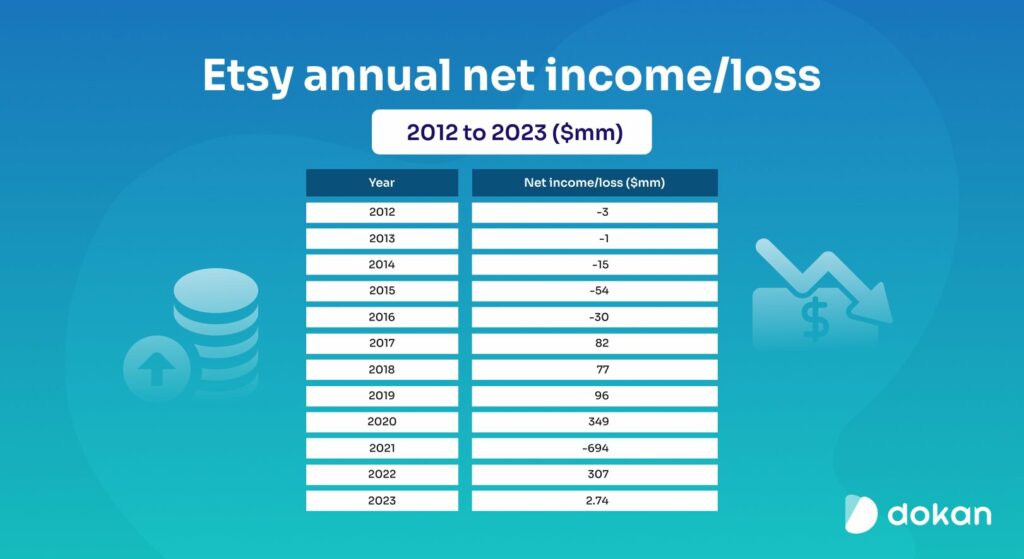
If you look at Etsy’s annual gross merchandise sales, they were $0.89bn in 2012 and $13.1 bn in 2023.
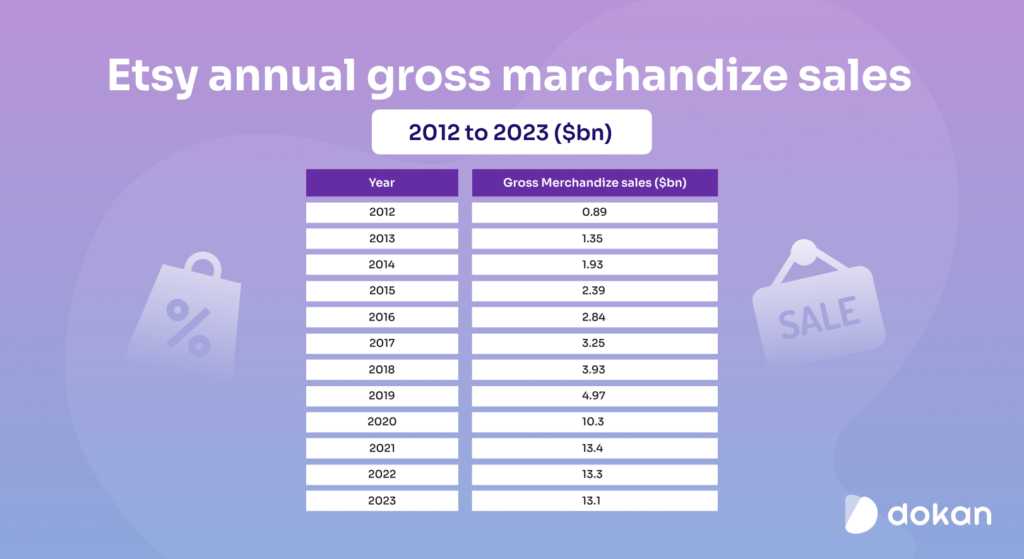
Etsy’s annual users have increased from 9.3m to 96.2m in 2023.
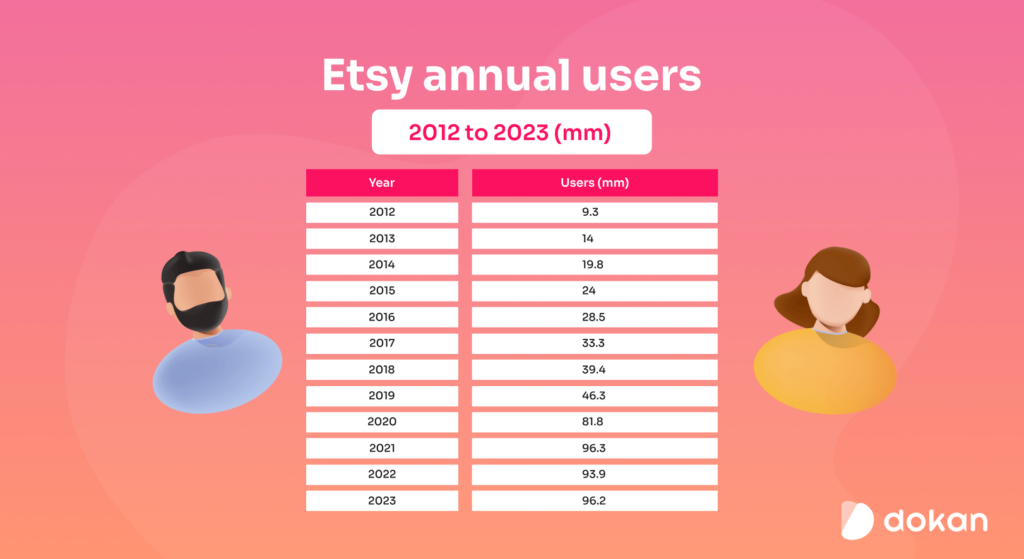
The annual sellers have also increased. In 2023 it was 8.3m.
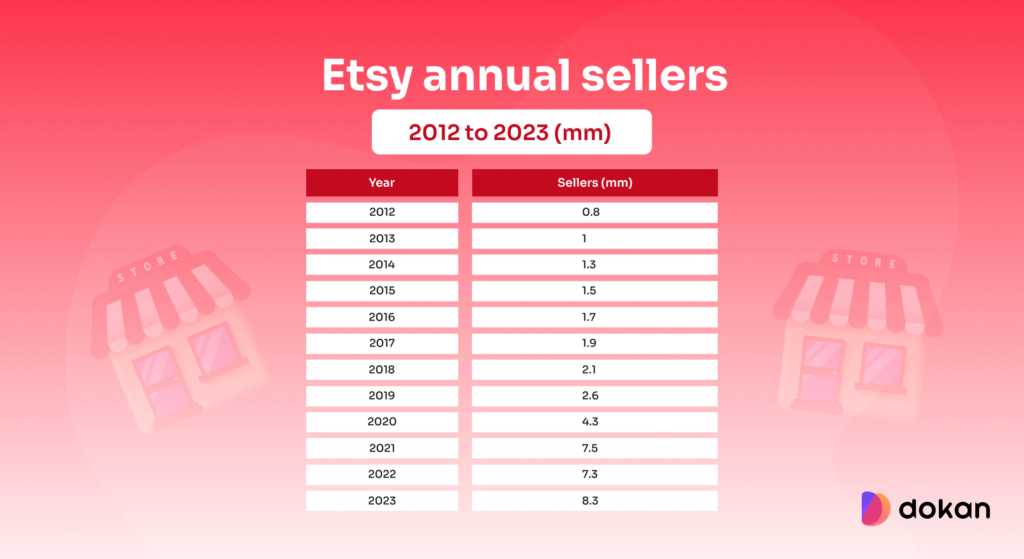
From the screenshot below, you can see the constant rise of Etsy quarterly users till 2024.
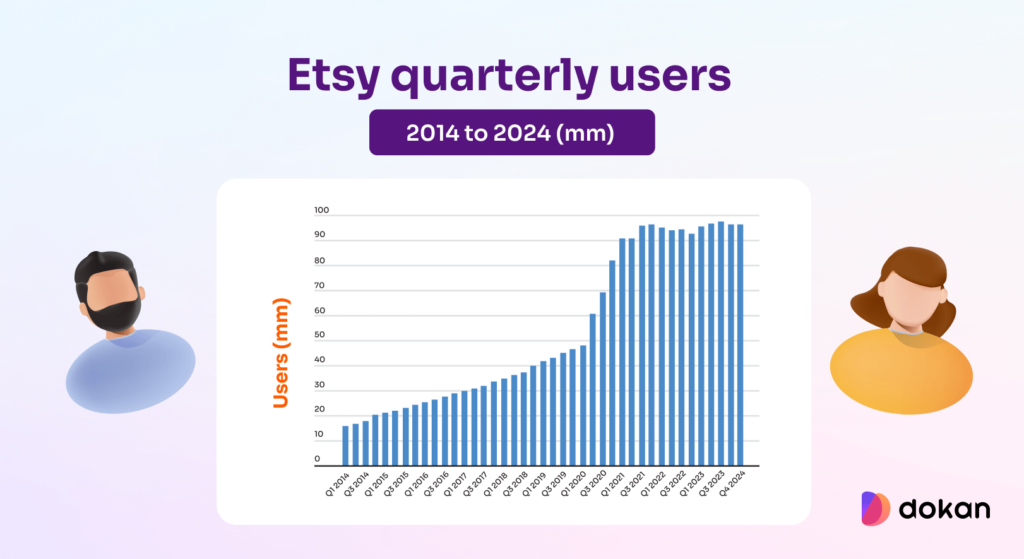
You can also see a significant increase in revenue from 2012 to 2024.
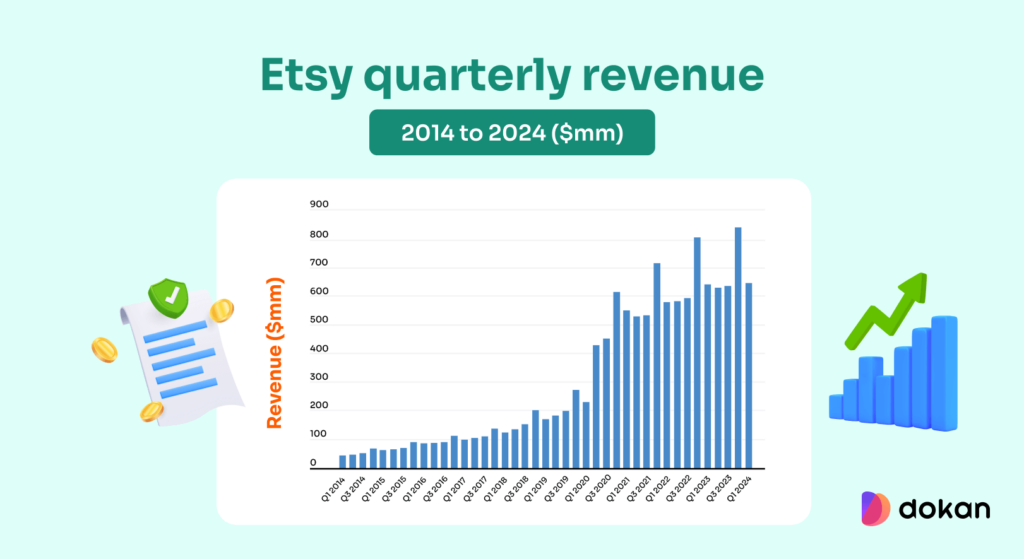
You can clearly understand how Etsy has risen to become one of the most prominent multivendor marketplace platforms.
Growth During Pandemic
The pandemic brought new challenges, slowing global economic growth and accelerating the digital revolution and eCommerce sector. Etsy experienced a remarkable surge, doubling its annual revenue in 2020 compared to the previous year.
This growth was fueled by favourable business conditions and strategic moves by the company.
One significant and timely decision was responding to the pandemic-driven demand for face masks. As the virus spread, there was a sudden and overwhelming need for face masks, leading to shortages.
Etsy leveraged its platform, urging sellers with the capability to produce custom cloth items to start making cloth masks.
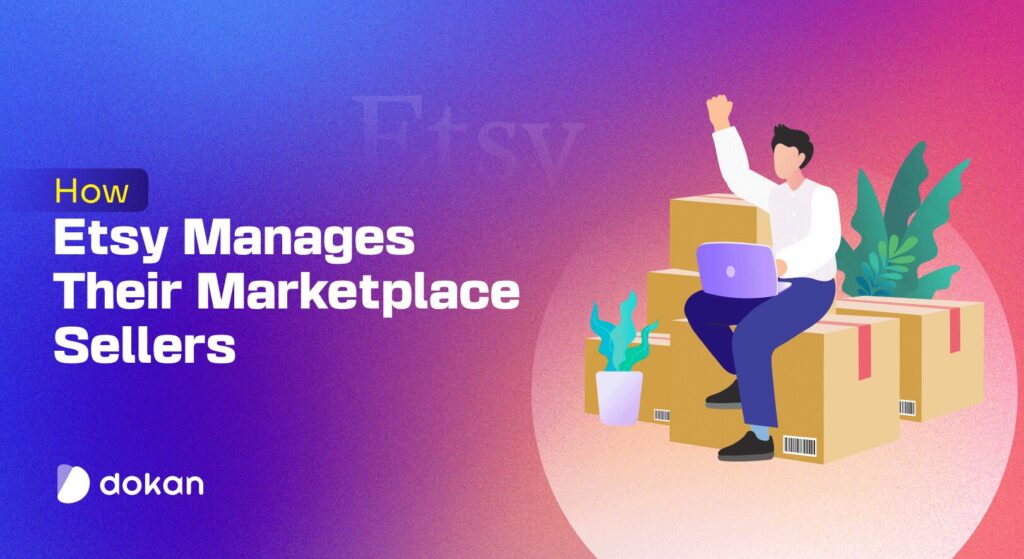
This initiative proved highly successful, with 20,000 sellers producing and selling masks within two weeks. In the second quarter of 2020, face masks alone accounted for 13% of Etsy’s gross merchandise sales, contributing $346 million globally.
This surge in mask sales boosted Etsy’s revenue and attracted additional traffic to the site, benefiting all sellers on the platform.
The pandemic also highlighted Etsy’s unique business model, which supports entrepreneurs in starting online businesses. With a sluggish global economy and uncertain job market, many individuals turned to eCommerce as a viable income source. Etsy reported that 44% of new sellers in 2020 began selling online due to the impact of COVID-19.
Etsy’s platform was particularly attractive to startups, providing the tools and support needed to set up shop.
This conducive environment led many new sellers to choose Etsy, contributing to its growth. By the end of 2020, Etsy’s active seller base had grown to 4.4 million, up from 2.7 million in 2019. The marketplace’s gross merchandise sales (GMS) reached $10.3 billion in 2020, a 106% increase from 2019.
Etsy’s success during the pandemic can be attributed to several strategic decisions, including:
- Rapidly adapting to market demands by encouraging sellers to produce high-demand items like face masks.
- Leveraging the surge in digital shopping due to lockdowns and social distancing measures.
- Providing robust support and tools for new entrepreneurs, attracting many new sellers.
- Capitalizing on increased consumer interest in unique, handmade, and custom products.
These strategies helped Etsy thrive in a challenging economic environment, cementing its place as a leading eCommerce platform for handmade and unique items.
Business Strategy Adopted By Etsy to Manage Marketplace Sellers
Etsy management has kept the marketplace sellers happy by making timely decisions and strategic decisions over a long period. The platform is flexible and can take necessary measures according to the situation.
Thus, the growth during the pandemic.
However, Etsy has also adopted business strategies to manage its marketplace sellers. Here are the strategies taken by Etsy that keep them on top of the chain-
1. Revenue Generation through Various Sources
Etsy doesn’t rely on only one income source. Etsy has various income sources. These sources include-
- Listing Fees: Sellers are charged a flat fee of $0.20 for every item listed on Etsy, regardless of whether the item sells or not. Listings expire after four months and automatically renew for another $0.20 unless the seller opts out. Items listed as “Private” are only charged when they sell.
- Promotional and Advertising Charges: Etsy offers promotional services through Etsy advertisements and offsite advertisements. Etsy ads appear in search results, category pages, and market pages, and sellers are charged on a cost-per-click (CPC) basis. Offsite ads on platforms like social media and search engines incur a commission of 12-15% of the sale price when a user clicks and completes a purchase within 30 days.
- Pattern: Pattern is a website builder that allows sellers to create their own independent stores with unlimited listings, web analytics, email marketing, blogging, and social media sharing. Etsy charges no listing or transaction fees for sales through Pattern, but there is a $15 monthly subscription fee after a 30-day free trial.
- Transaction Fees: For all sales made through Etsy’s website, the platform charges a 5% commission, including shipping and gift wrapping fees. This rate is competitive compared to other marketplaces like eBay and Amazon, which charge 8-15%.
- Subscriptions: Etsy Plus is a subscription service that costs $10 per month and provides advanced customization options, business cards, customized shipping boxes, restock notifications, and credits for listings and domain registrations.
- Payments Processing Fees: Etsy offers various payment methods in multiple currencies, including debit cards, credit cards, gift cards, Etsy credit, PayPal, Apple Pay, and Google Pay. The platform charges a flat fee (typically $0.30) and a percentage commission (ranging from 3-6%) on transactions, depending on the seller’s bank location.
- Revenue from Services: Services provided to sellers, such as advertising, Pattern, and subscriptions, make up almost a quarter of Etsy’s total revenue. This revenue model benefits from the competition among sellers, who utilize these services to outcompete each other.
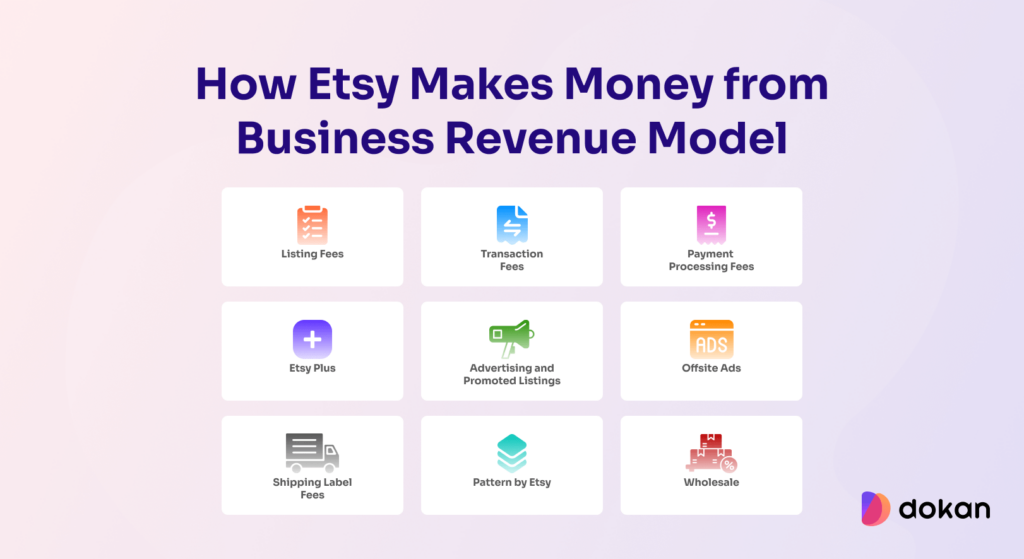
These various sources maintain Etsy’s revenue stream and help them cater to all the needs of marketplace sellers.
2. Staying One Step Ahead of the Competition
Etsy is always one step ahead of the competition. That’s because it has added modern eCommerce technologies to its platform, which has significantly improved the buyer experience.
- Etsy has always worked to improve the buyer experience on its platform. Their acquisition of Blackbird Technologies was a step in this direction.
- The eCommerce store has worked on improving search results for the buyer. Accurate search results catalyze revenue generation for any eCommerce business.
- Since 2019, Etsy has also worked on utilizing technologies like Augmented Reality (AR) in the marketplace.
This is how Etsy is staying one step ahead all the time.
3. Taking the Right Steps Towards Business Sustenance
Etsy’s website emphasizes the company’s steadfast dedication to its vision: “Etsy’s commitment is to create lasting change in the world.”
From the beginning, Etsy has ensured that its sellers adhere to the core philosophy of offering handmade or vintage products.
Beyond its business operations, Etsy has made significant contributions to the community. Since 2013, the company has supported top sellers in scaling their businesses by connecting them with manufacturers.
Additionally, Etsy has expanded its sellers’ reach by partnering with major retailers such as Nordstrom, Macy’s, and Whole Foods to showcase their products.
4. Consistency in Business Practices to Build the Right Brand Image
Etsy has consistently tailored its approach to meet the needs of its target audience, shaping all business practices accordingly.
For example, before the marketplace launched, the founders sent out handcrafted invitations to potential sellers. This gesture demonstrated Etsy’s commitment to creating a seller-focused platform.
Etsy’s ongoing support for startups and small to medium-sized enterprises (SMEs), emphasizing creative products and avoiding mass-market goods, has resulted in a vibrant marketplace.
By maintaining the core values on which it was founded, Etsy has fostered a loyal customer base. A report from Etsy highlighted this loyalty, revealing that nearly half of the buyers who shopped on the platform in 2012 continued to do so through 2015.
5. Customer-Centric Approach
Customer satisfaction is a critical factor in the success of any business, and Etsy excels in this area by offering a unique shopping experience for buyers. Beyond that, Etsy provides valuable services to its vendors, enhancing their overall experience and business potential.
One such service is Pattern, which enables sellers to create customized websites outside the Etsy platform. This empowers sellers to build their brands independently and serves as an additional revenue stream for Etsy. Through Pattern, Etsy continues to support its vendors while diversifying its business model.
Factors Behind Etsy’s Success
Etsy hasn’t become successful just like that. Quite a few factors have contributed to Etsy’s success and ability to manage its marketplace sellers. They are-
1. Value Creation
Etsy has created significant value by focusing exclusively on handcrafted and vintage goods, carving out a unique niche that giants like Amazon and Alibaba cannot match.
Etsy fosters a global community of creative entrepreneurs, allowing them to earn a living, sell globally, connect with other artists, and build personal brands through virtual stores. It also offers a knowledge hub with tips and tricks to boost store performance. For buyers, Etsy provides the largest variety of handmade goods, global delivery, and personalized recommendations.
Additionally, Etsy offers services such as easy communication with sellers, transaction processing, and access to ratings and reviews, some of which are free and others for a fee.
2. Social Responsibility
Etsy is committed to empowering micro-entrepreneurs and advocating for their interests at both local and federal levels. The company has taken significant steps to assist small entrepreneurs in the creative and crafting sectors, an effort few businesses undertake.
Etsy has dedicated advocacy teams in the U.S. and Europe focused on policy reforms that facilitate business operations for sellers and other micro-entrepreneurs.
In September 2016, Etsy organized a visit for dozens of sellers to Washington, D.C., to meet with congress members about issues impacting their businesses. Additionally, Etsy adopts progressive stances on critical issues, such as proposals to ensure economic security for individuals outside the traditional employer-employee relationship.
3. Technology
Etsy’s success as an e-commerce platform is closely tied to its strong relationship with technology. In an interview with TechCrunch, Etsy’s then-CTO, Kellan Elliott-McCrea, emphasized the company’s desire to maintain extensive control over its technology stack.
Although Etsy doesn’t manufacture its own hardware like Facebook, it carefully evaluates each technological decision.
Elliott-McCrea highlighted the inevitability of change, acknowledging that not all solutions are permanent and that assumptions can quickly become outdated.
4. Sustainability
Etsy’s sustainability is supported by several key factors.
Firstly, its strategy of providing free shipping from sellers worldwide has helped build a robust global network. Additionally, Etsy offers various add-on services to sellers and invests in technology to enhance the overall user experience.
This focuses on improving the platform’s functionality and user satisfaction. It established Etsy as the premier destination for buying and selling handmade and vintage goods.

Moreover, the pandemic has accelerated Etsy’s growth, particularly with the demand for masks. However, despite this temporary boost, Etsy has demonstrated strong performance, with significant growth in non-mask sales during the pandemic. This resilience underscores Etsy’s sustainability beyond short-term trends.
In its 2020 Q3 earnings call, Etsy reported impressive growth in sales on its platform, with a nearly 150% increase in total sales and over 93% growth in non-mask sales. This highlights the strength of Etsy’s business model and its ability to thrive in favourable and challenging market conditions.
Overall, Etsy was a robust business before the pandemic, and its continued growth and resilience indicate that it will remain a strong player in the eCommerce market in the long run.
How to Create a Marketplace like Etsy
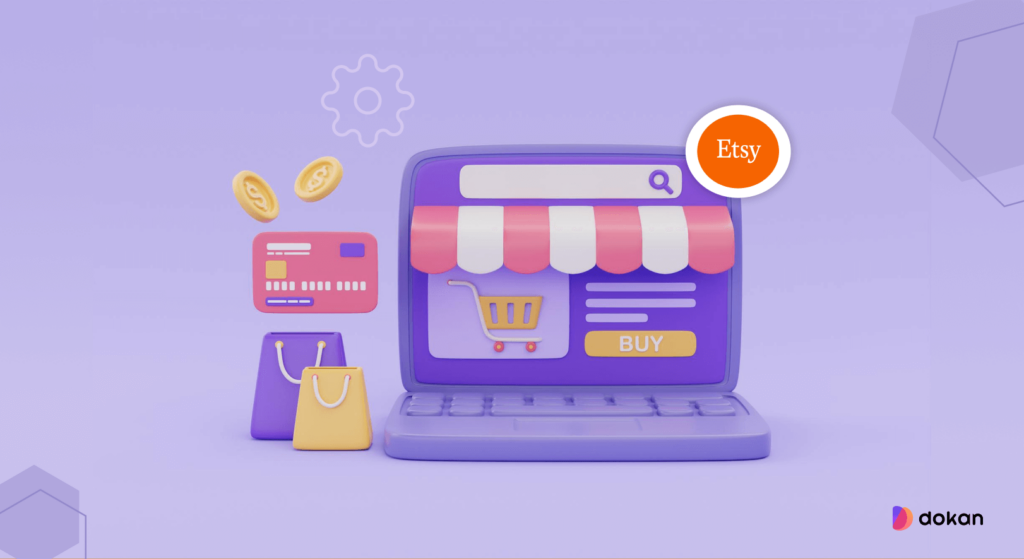
After reading about Etsy’s success, you must be itching to start your marketplace. However, considering the features and technological advancements in the Etsy platform, you may think it is hard to replicate.
But what if we told you can quickly create a marketplace like Etsy and that you don’t need any technological knowledge, either?
Yes, using the Dokan multivendor marketplace WordPress plugin, you can easily create a multivendor marketplace just like Etsy. Want to know how?
We have already written a guide on creating a marketplace like Etsy. Read it and start your online marketplace today.
Last Words
Etsy has become a global phenomenon in the eCommerce and multivendor marketplace. Its management of marketplace sellers and the shopping experience it provides to its customers are exemplary.
Several case studies have been published regarding their success. Many upcoming eCommerce and multivendor sites follow their tactics.
If you are on the same path, try to study Etsy closely. In that case, this article will help you understand how Etsy does business properly. And maybe one day you will become as big Etsy as well.
Subscribe to
Dokan blog
We send weekly newsletters, no spam for sure!

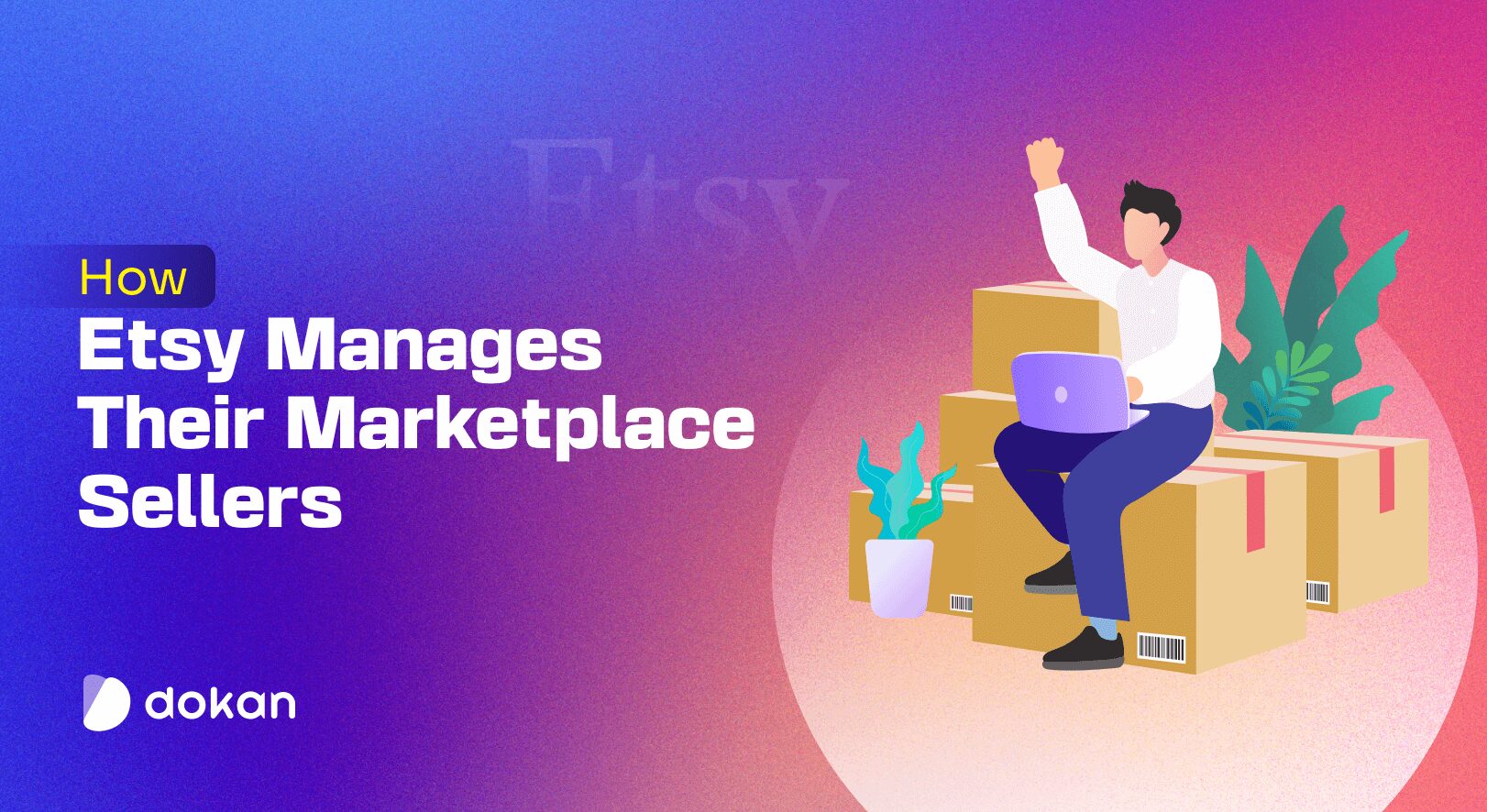
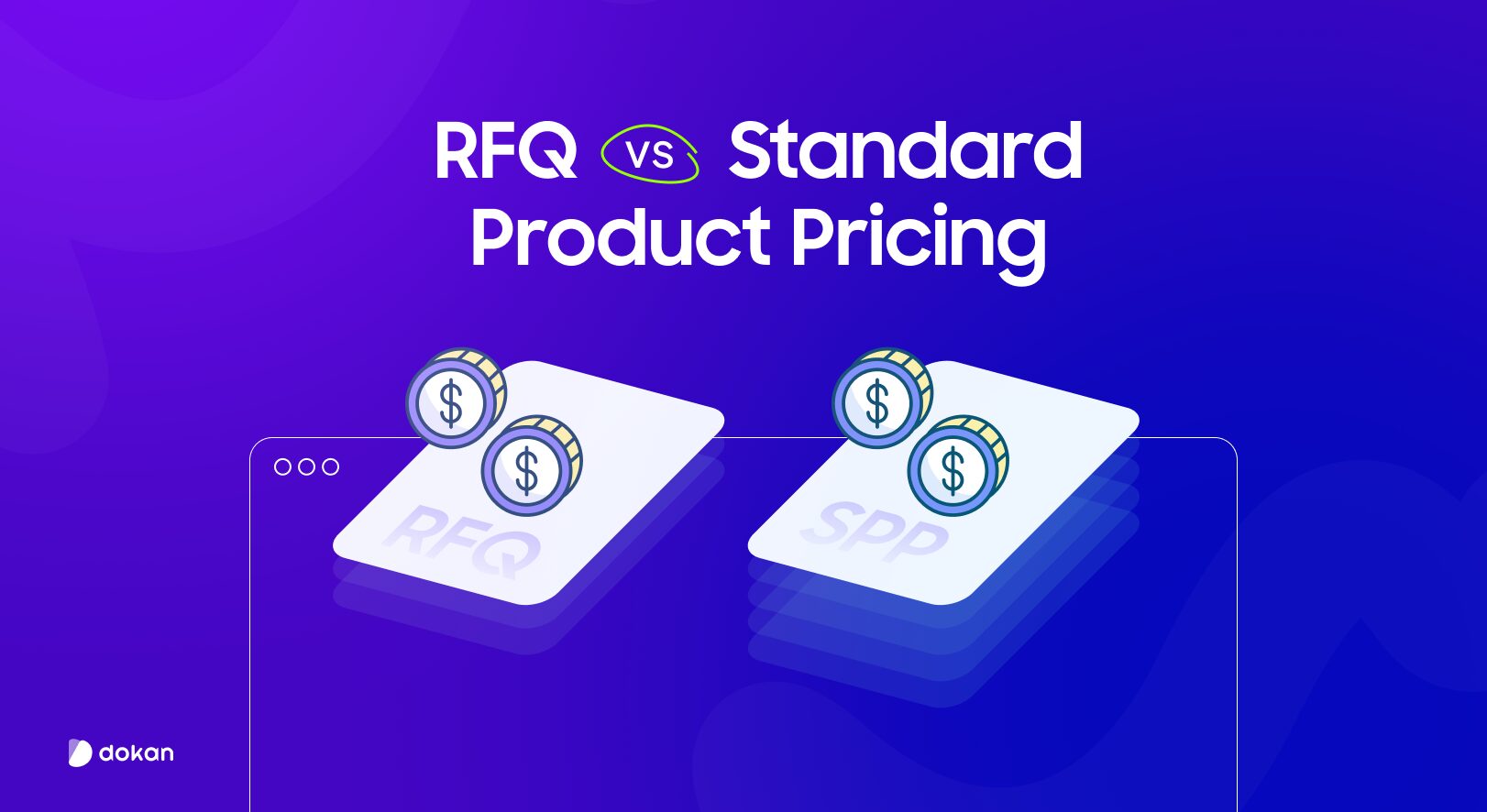

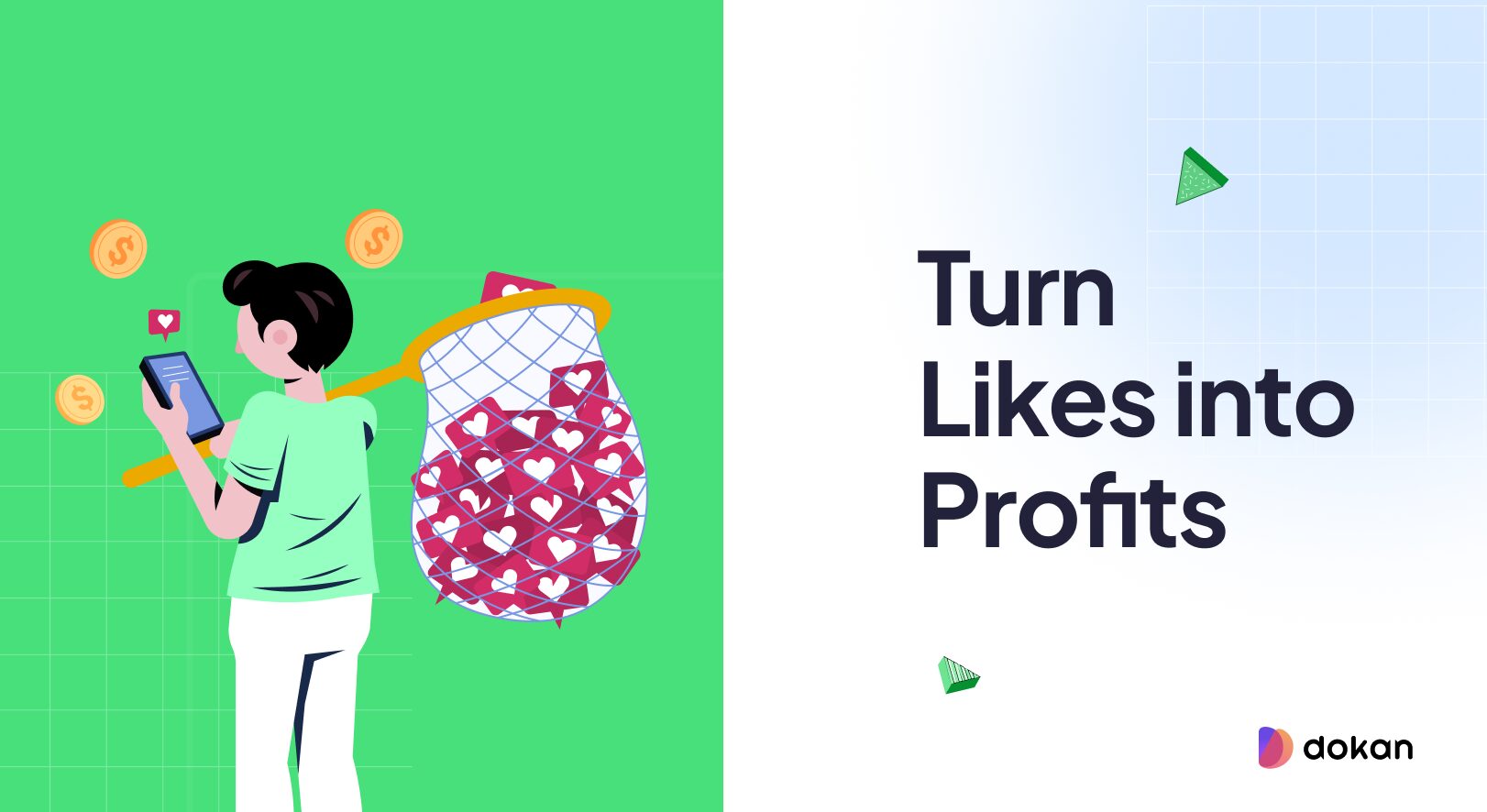
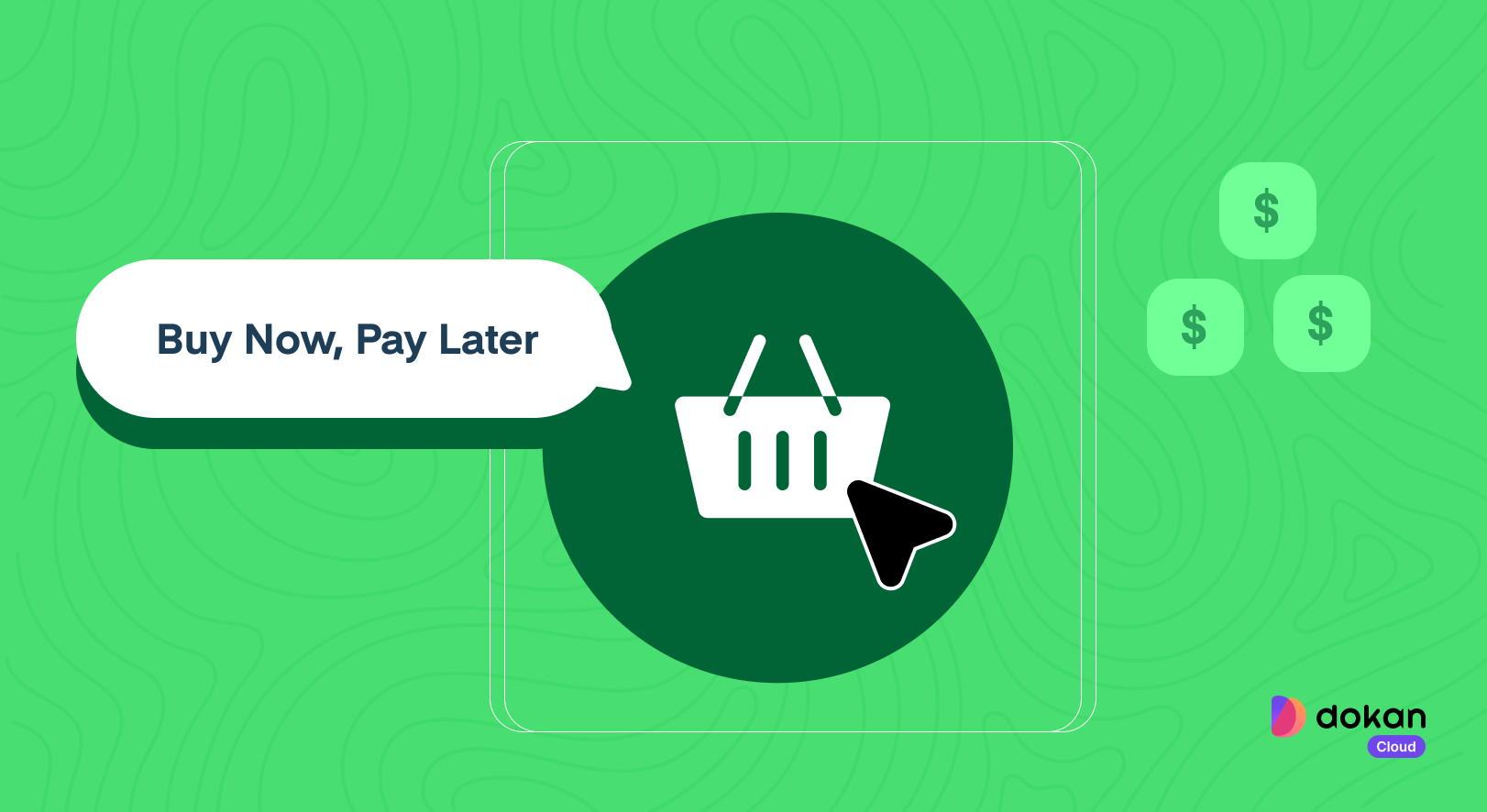

Leave a Reply